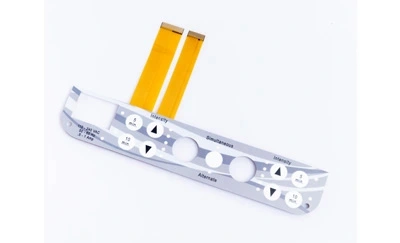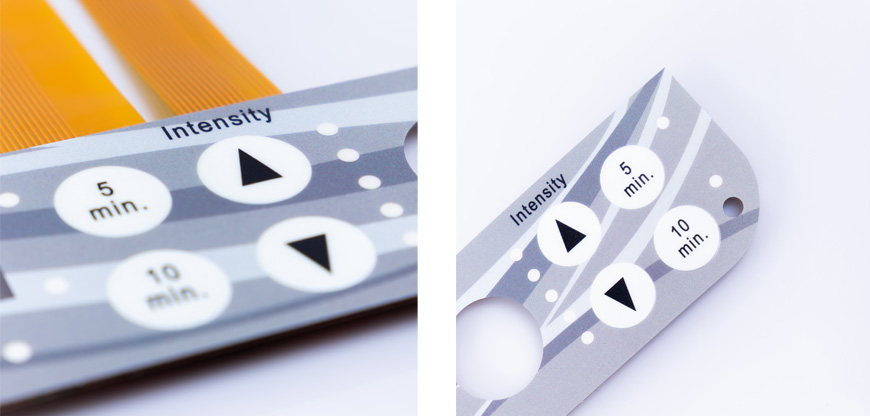
In today's fast-paced technological landscape, innovation in user interface design plays a pivotal role in enhancing the usability of electronic devices. Non-Tactile Membrane Switches, particularly those with a four-layer structure, have emerged as a versatile solution for numerous applications. This article explores the specific scenarios where a four-layer structure Non-Tactile Membrane Switch outshines other options, offering superior advantages in terms of performance, durability, and versatility.

Before delving into their specific applications, it's essential to grasp the fundamentals of Non-Tactile Membrane Switches. These switches are a type of user interface that uses pressure-sensitive adhesive layers to create a contact when a user presses a button or area on the switch. The four-layer structure consists of the following layers:
1. Graphic Overlay
The top layer features the printed graphics and labels, providing users with a visual representation of the switch's functions.
2. Spacer Layer
Beneath the graphic overlay, the spacer layer maintains a gap until pressure is applied, preventing unintended activations.
3. Circuit Layer
This layer contains the printed circuitry, including conductive traces that complete the circuit when pressed.
4. Backing Layer
The bottom layer provides structural support and adhesive for mounting the switch to the device's surface.
Now, let's explore the diverse applications where a four-layer structure Non-Tactile Membrane Switch excels:
1.1. Patient Monitoring Systems
Non-Tactile Membrane Switches are ideal for medical devices such as patient monitoring systems. Their smooth surface is easy to clean and disinfect, crucial in a healthcare environment. Moreover, their quiet operation ensures minimal disturbance to patients.
2.1. Harsh Environments
In industrial settings, where dust, moisture, and chemicals are prevalent, the robust nature of four-layer membrane switches shines. They are resistant to environmental factors, ensuring reliable performance in demanding conditions.
3.1. Cockpit Controls
Aerospace applications, particularly in cockpit controls, require switches that are both lightweight and durable. Non-Tactile Membrane Switches meet these criteria and can be custom-designed to fit the unique needs of aircraft manufacturers.
4.1. Keypads and Remote Controls
In consumer electronics like remote controls and keypads, a sleek design and responsive buttons are essential. Four-layer membrane switches offer a customizable appearance and a pleasant tactile experience.
5.1. Center Consoles
The automotive industry relies on non-tactile membrane switches for various in-car interfaces. Their durability, versatility, and resistance to wear make them a preferred choice for center consoles and control panels.
6.1. Tactical Equipment
In military applications, reliability is paramount. Four-layer membrane switches can withstand extreme conditions, making them suitable for rugged tactical equipment.
7.1. Touch Control Panels
Modern household appliances often feature touch control panels. Membrane switches offer an intuitive user experience while ensuring the appliance's longevity.
8.1. Analytical Instruments
Laboratory instruments require precise and reliable input methods. Non-Tactile Membrane Switches can be engineered to provide accurate control in analytical equipment.
In conclusion, the four-layer structure Non-Tactile Membrane Switch is a versatile solution with a wide range of applications across various industries. Its durability, customizability, and resistance to environmental factors make it an advantageous choice for designers and engineers looking to enhance the user experience in their products.
1. Are Non-Tactile Membrane Switches sensitive to environmental conditions?
Non-Tactile Membrane Switches are designed to be resistant to environmental factors such as dust, moisture, and chemicals, making them suitable for various conditions.
2. Can the graphics on a Non-Tactile Membrane Switch be customized?
Yes, the graphic overlay of these switches can be fully customized to match the design and branding requirements of the device.
3. How long do Non-Tactile Membrane Switches typically last?
The lifespan of Non-Tactile Membrane Switches can vary depending on usage but is generally quite long due to their durable construction.
4. Are Non-Tactile Membrane Switches easy to clean?
Yes, these switches are easy to clean and disinfect, making them suitable for applications in healthcare and other clean-sensitive environments.
5. Can Non-Tactile Membrane Switches be retrofitted into existing equipment?
Yes, Non-Tactile Membrane Switches can often be designed to fit existing equipment, making them a versatile choice for upgrades and replacements.
NEXT